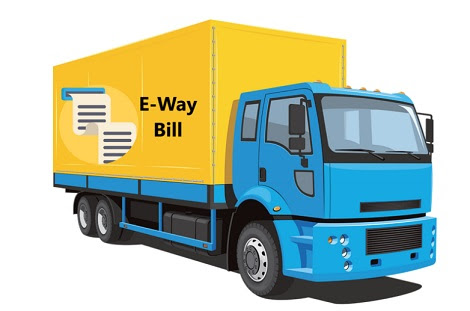 Last updated: January 30th, 2023 5:22 PM
Last updated: January 30th, 2023 5:22 PM
GST e-Way Bill? Know all about rules and process
GST E-way bill is a permit needed for the inter-state and intra-state transportation of goods worth more than Rs.50,000. It is electronically generated through GSTN and contains the details of the goods, the consignor, the recipient, and the transporter. The e-way bill has been made mandatory for inter-state supplies from April 1, 2018, and for intra-state supplies from April 25, 2018, in certain states like Arunachal Pradesh, Madhya Pradesh, Meghalaya, Sikkim, and Puducherry.Contents of the GST e-way bill
The e-way bill consists of two parts, Part A and Part B. Part A collects the details that are relevant to consignment, generally, it is the invoice details. Accordingly, the following information has to be submitted.- GSTIN of the recipient has to be submitted.
- The PIN Code of the place where the goods are to be delivered needs to be mentioned.
- The Invoice or the Challan number against which the goods are to be supplied are also to be submitted.
- The value of the consignment is also to be mentioned
- HSN code of the goods which are to be transported should be entered. In case turnover is up to INR 5 crores, the HSN code's first two digits need to be mentioned. If the turnover is more than Rs. 5 crores a four-digit HSN code is also required.
- The reason for transportation need to be predefined and the most appropriate one has to be selected.
- The transport document number should be indicated, it includes goods receipt number, railway receipt number, airway bill number.
When is it generated?
An E-way bill has to be generated before the goods are shipped and it is to be included in the details of the goods, the consignor, recipient, and the transporter. An e-way bill is to be generated for:- Supplying goods
- Non-supply transactions like the export/Import, return of goods, job work, line sales, sales based on the approval, Supply of goods for exhibition or fair, and goods that are used for personal consumption.
When is it generated?
All registered persons who will be the consignor, consignee, recipient, or the transporter need to generate an E-way bill if the transport is carried through owned or hired means of transport. If the person who is supplying goods and services is an unregistered person who is supplying to a registered person then he is required to follow the compliance procedure as the supplier is not registered. And if both the consignor and the consignee fail to generate the e-way bill.It is necessary to generate the E-way bill irrespective of the value of the consignment in two cases:
If the goods that are supplied by the principal to a job working in an inter-state transaction. During the inter-state transfer of the handicraft goods by the supplier who is exempted from the GST Registration.How to generate the bill?
An e-way bill is generated for the movement of goods that can be generated on the portal. Any supplier or transport transporting goods with a value of more than Rs.50,000 in a single-vehicle should carry the GST e-way bill as per the GST council regulations. The supplier or the transporter can create the E-way bill through the following ways:- LEDGERS Software
- E-way bill Portal
- SMS
- Android App
- Site-to-site integration (through API)
Popular Post

In the digital age, the convenience of accessing important documents online has become a necessity...

The Atalji Janasnehi Kendra Project that has been launched by the Government of Karnataka...

The Indian Divorce Act governs divorce among the Christian couples in India. Divorce...

When an individual has more than a single PAN card, it may lead to that person being heavily penalised, or worse,...

Employees Provident Fund (PF) is social security and savings scheme for employee in India. Employers engaged...


